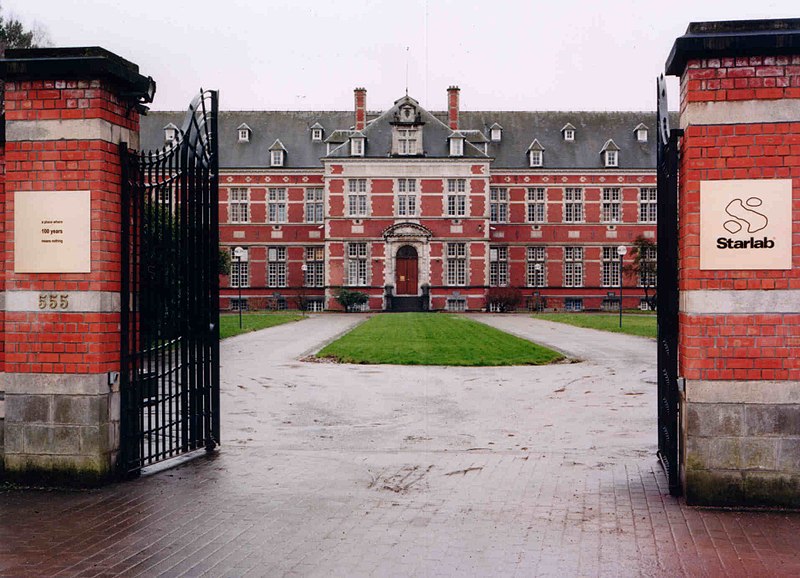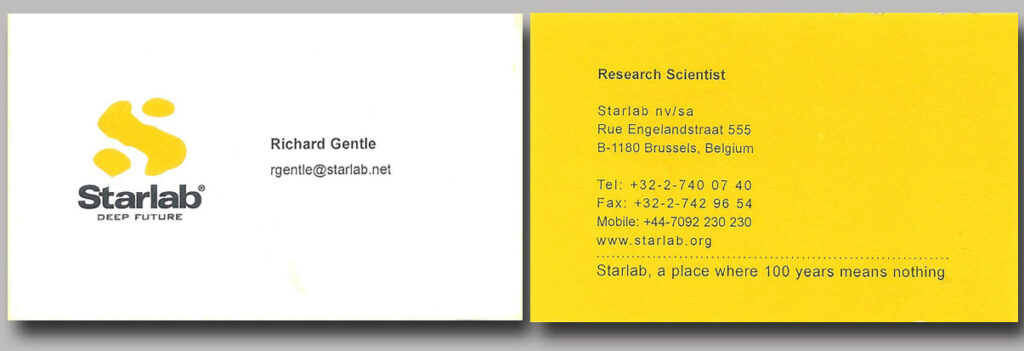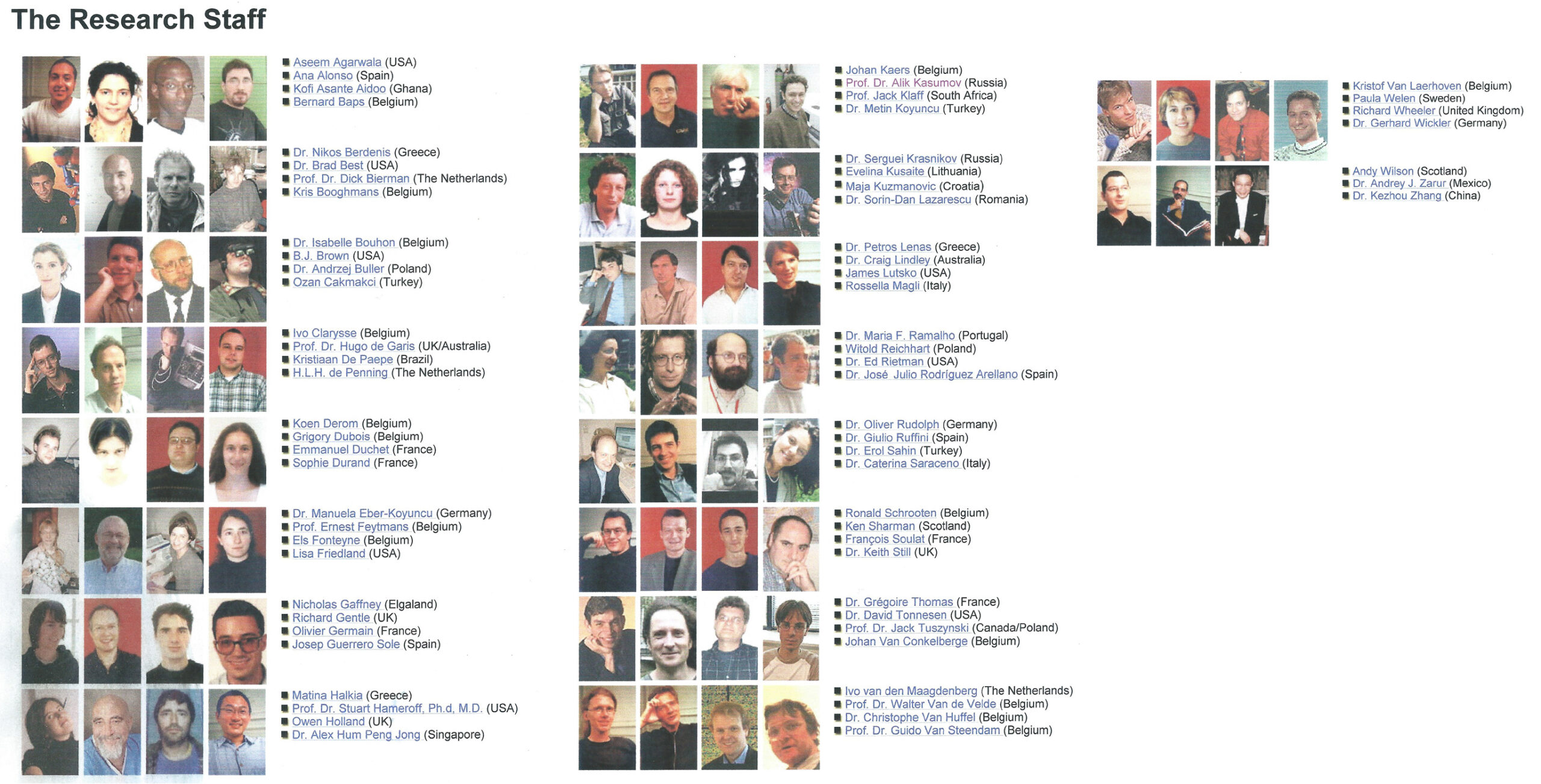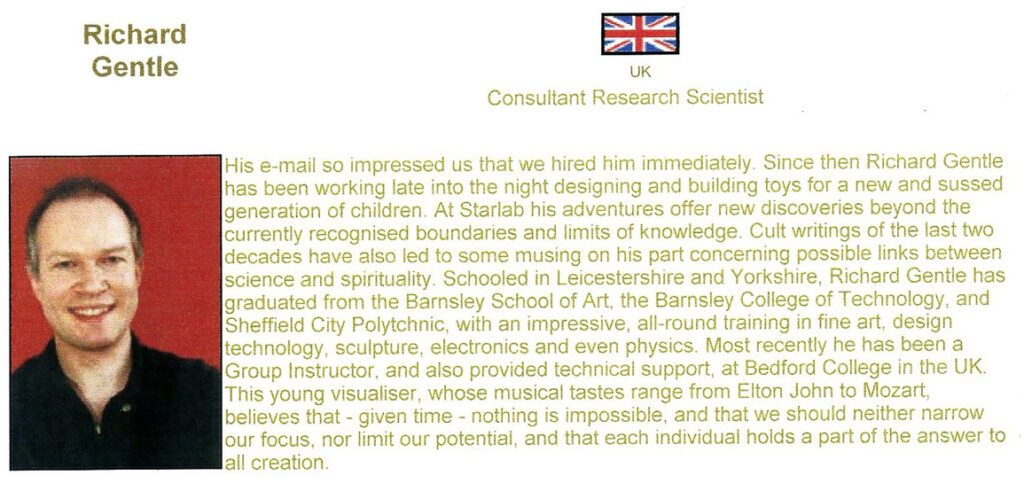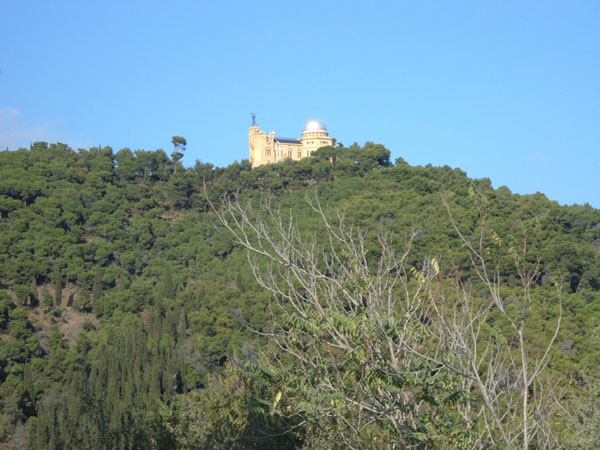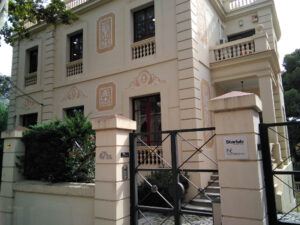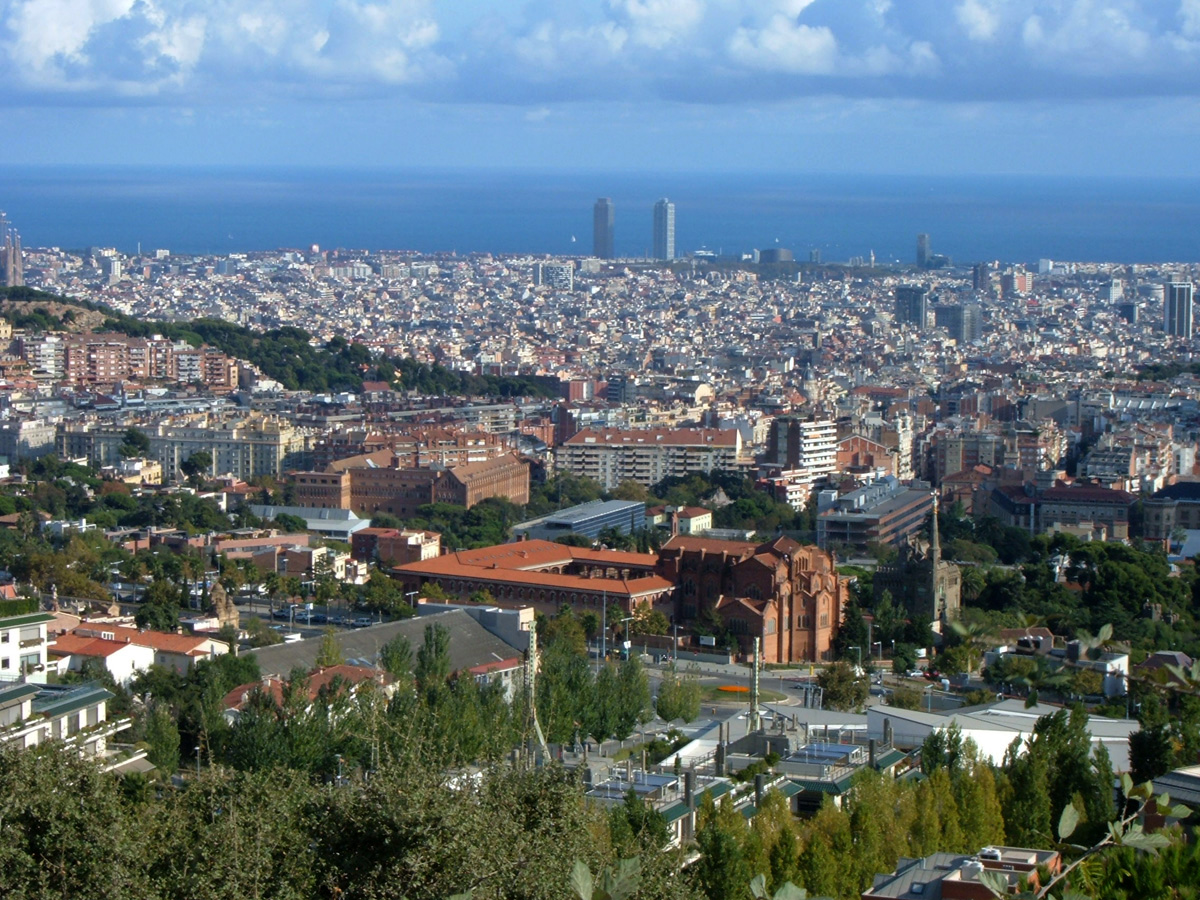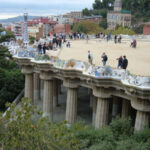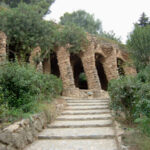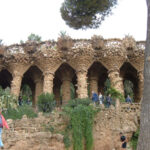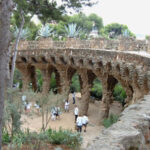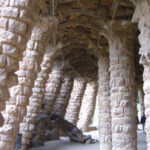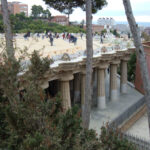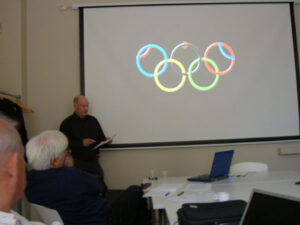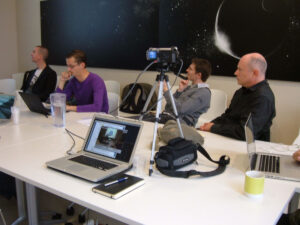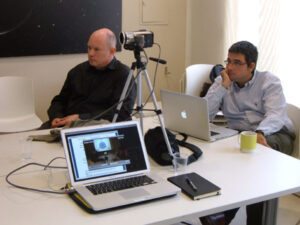Starlab
A story of personal manifestation and adventure – Richard Gentle
In 2000, I was flicking through a copy of ‘The Sunday Times magazine‘ and came across an article about a place called Starlab. Founded by Belgian entrepreneur, Walter de Brouwer, and based in Brussels, it was created to bring together leading scientists and researchers from around the world to see what discoveries they might come up with – if you put them all together in one place. I was one of those fortunate enough to be invited to work with them.
Here are a few paragraphs I pulled off the web, from around that time:
The brainchild of Walter De Brouwer, a 43-year-old Belgian mathematician-turned-businessman, Starlab is a “thinkubator” where 70 scientists from 33 countries are casting their brains into the deep future.
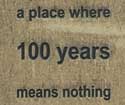 “At Starlab 100 years means nothing,” quips Mr De Brouwer, repeating the centre’s motto that appears on the lobby of its sprawling headquarters. “I have set this up as a Noah’s Ark of brilliant scientists and recruited the crew I would need one day to go and colonise another planet to jump-start civilisation,” he says.
“At Starlab 100 years means nothing,” quips Mr De Brouwer, repeating the centre’s motto that appears on the lobby of its sprawling headquarters. “I have set this up as a Noah’s Ark of brilliant scientists and recruited the crew I would need one day to go and colonise another planet to jump-start civilisation,” he says.
In 1996, as Silicon Valley venture capitalists ploughed their dollars into internet start-ups, Mr De Brouwer, a former magazine publisher and self-confessed uber-nerd, decided that science was an unexploited goldmine. His idea was to import some of the world’s best brains to Brussels and let them work on projects that were off the intellectual radar screens of university science departments or corporate research and development teams.
 Beyond the financial hurdles, the centre’s determination to fund offbeat projects such as the Foundation of Affordable Mysticism – an association of artists and technologists exploring new modes of artistic expression – has prompted some critics to question whether Starlab is a group of pranksters masquerading as serious scientists. Time machines and teleportation modules may have great implications in the deep future but few realistic applications in the here and now. But Starlab scientists are not deterred by such scepticism. “We are a collection of believers. We come here not because we see it but because we believe.” says Mr Van de Velde.
Beyond the financial hurdles, the centre’s determination to fund offbeat projects such as the Foundation of Affordable Mysticism – an association of artists and technologists exploring new modes of artistic expression – has prompted some critics to question whether Starlab is a group of pranksters masquerading as serious scientists. Time machines and teleportation modules may have great implications in the deep future but few realistic applications in the here and now. But Starlab scientists are not deterred by such scepticism. “We are a collection of believers. We come here not because we see it but because we believe.” says Mr Van de Velde.
A few links: Wikipedia and H+Pedia and the archive
In the story that follows, I’m aware that there could be a few continuity errors, since I no longer recall the order of some events. However, it will hopefully give you a flavour of my experience. Also, DF stands for Deep Future.
As I read about Starlab, I felt excited that there were such interesting and somewhat maverick people in the world. Acting on inspiration, I sent an email to Starlab, saying how much it interested me, together with a bit about my own background – not really expecting a reply. However, within a short time, I received a reply – from Walter de Brouwer, himself. “Come and visit us.” was the essence 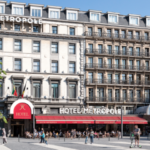 of the message. I was now a bit worried… since I hadn’t thought that far ahead and didn’t have money for travelling. I now had to admit my predicament to Walter and fully expected the offer to collapse. However, he immediately replied and offered to not only pay my train via Eurotunnel, but also to put me up in the Hotel Metropole in the heart of Brussels.
of the message. I was now a bit worried… since I hadn’t thought that far ahead and didn’t have money for travelling. I now had to admit my predicament to Walter and fully expected the offer to collapse. However, he immediately replied and offered to not only pay my train via Eurotunnel, but also to put me up in the Hotel Metropole in the heart of Brussels.
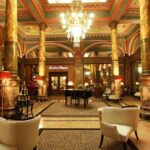 I arrived in the afternoon and checked into the hotel. In the evening, after eating, and with nothing better to do, I asked if I could play the Grand Piano in the lounge. The bartender agreed and I entertained a few other residents for about 30 minutes.
I arrived in the afternoon and checked into the hotel. In the evening, after eating, and with nothing better to do, I asked if I could play the Grand Piano in the lounge. The bartender agreed and I entertained a few other residents for about 30 minutes.
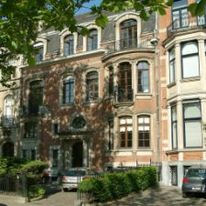 The next day, I arrived at Starlab in the early afternoon, for my arranged appointment with Walter at 2 pm. It turned out, he wasn’t actually there! I didn’t really know what to do, having come all the way from the UK to see him. Suddenly, I was invited into a downstairs office where I met Dr Andrey Zarur. Recently, I had made my first website at home and suddenly, it really came into its own. I was able to show Andrey quite a few visual examples from my background in experimenting and inventing. After about 40 minutes with Andrey, I was told that Walter should be on his way soon. I returned to the main hallway and sat on a chair. A few minutes later, a man walked past, noticed me, and began a conversation with me. “Let’s sit outside in the garden”, suggested Jack Klaff. We talked for about 30 minutes and I think Jack, as well as telling me a bit about Starlab, was also assessing my potential suitability for membership. We got on well but eventually, Jack had to leave for another appointment. At about 4 pm, Walter arrived and I was invited upstairs to his small but brightly daylight lit office.
The next day, I arrived at Starlab in the early afternoon, for my arranged appointment with Walter at 2 pm. It turned out, he wasn’t actually there! I didn’t really know what to do, having come all the way from the UK to see him. Suddenly, I was invited into a downstairs office where I met Dr Andrey Zarur. Recently, I had made my first website at home and suddenly, it really came into its own. I was able to show Andrey quite a few visual examples from my background in experimenting and inventing. After about 40 minutes with Andrey, I was told that Walter should be on his way soon. I returned to the main hallway and sat on a chair. A few minutes later, a man walked past, noticed me, and began a conversation with me. “Let’s sit outside in the garden”, suggested Jack Klaff. We talked for about 30 minutes and I think Jack, as well as telling me a bit about Starlab, was also assessing my potential suitability for membership. We got on well but eventually, Jack had to leave for another appointment. At about 4 pm, Walter arrived and I was invited upstairs to his small but brightly daylight lit office.
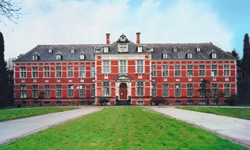 Walter and I talked for almost an hour and I felt we were getting on very well. He was excited to show me photographs of the new Starlab building, where they would be moving to in a matter of weeks – an old hospital and I think at one time, possibly a former Czech Embassy to Brussels. It was a massive and very impressive red brick mansion. As Walter turned the pages of his photo album, his mood dipped a little and he suddenly said (and I paraphrase) “I don’t know how long it will last – it could fail – but I’m going to see how it goes.” Walter’s mood quickly brightened again and he said: “Come and work with us for a few weeks. We’ll cover your travel and
Walter and I talked for almost an hour and I felt we were getting on very well. He was excited to show me photographs of the new Starlab building, where they would be moving to in a matter of weeks – an old hospital and I think at one time, possibly a former Czech Embassy to Brussels. It was a massive and very impressive red brick mansion. As Walter turned the pages of his photo album, his mood dipped a little and he suddenly said (and I paraphrase) “I don’t know how long it will last – it could fail – but I’m going to see how it goes.” Walter’s mood quickly brightened again and he said: “Come and work with us for a few weeks. We’ll cover your travel and 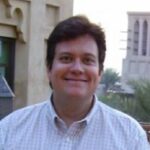 accommodation. I’d like you to meet Richard – I think he might be here soon – he’s playing with his band.” At about 5 pm, Richard Wheeler arrived, entered Walter’s office with a flourish, guitar in hand, exchanged a few confident and exuberant pleasantries, agreed to ‘take me on’ around November time, and promptly left again. (I didn’t have any photos of the Starlab building when it was based in the heart of Brussels, but Chris Duif has kindly provide the one shown, in the related paragraph, above).
accommodation. I’d like you to meet Richard – I think he might be here soon – he’s playing with his band.” At about 5 pm, Richard Wheeler arrived, entered Walter’s office with a flourish, guitar in hand, exchanged a few confident and exuberant pleasantries, agreed to ‘take me on’ around November time, and promptly left again. (I didn’t have any photos of the Starlab building when it was based in the heart of Brussels, but Chris Duif has kindly provide the one shown, in the related paragraph, above).
A couple of things I’d been told about Starlab
The common language throughout Starlab, was English. Something of a relief to me, since my ability with other languages was somewhat lacking.  And I think it may have been Richard Wheeler who later quipped: “There are only two ways to get into Starlab: You have to be a recognised scientist or researcher with peer reviewed papers; or someone already here has to request your presence.” (It’s quite possible that I may have been the only person to work for Starlab who didn’t fit either of those two categories and it seems the personal invite from Walter de Brouwer bypassed that usual recruitment route for me. Indeed, whilst at Starlab, I attended one or two presentations by individuals trying to gain employment and I’m not aware of any of them being accepted).
And I think it may have been Richard Wheeler who later quipped: “There are only two ways to get into Starlab: You have to be a recognised scientist or researcher with peer reviewed papers; or someone already here has to request your presence.” (It’s quite possible that I may have been the only person to work for Starlab who didn’t fit either of those two categories and it seems the personal invite from Walter de Brouwer bypassed that usual recruitment route for me. Indeed, whilst at Starlab, I attended one or two presentations by individuals trying to gain employment and I’m not aware of any of them being accepted).
Arriving at Starlab
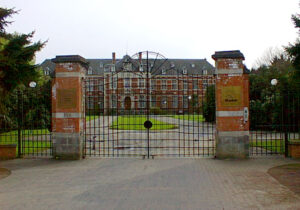 I don’t remember the exact dates now, but lets just say I got permission from my employer at the time, to take a month off, and I arrived at the Starlab mansion, in a taxi, mid-afternoon in November 2000. After announcing myself through an intercom, the massive wrought iron gates slowly opened and we drove through and along the drive to the front door. There was a flurry of activity and various workmen were putting the finishing touches to various rooms. A woman introduced herself (possibly Walter’s PA) and we talked while walking, as she tried to decide what to do with me and where I should go. She seemed surprised that I was there and evidently hadn’t been informed – let alone realised I was due to stay in the mansion over the weekend! Slightly flustered, she apologised, saying: “Goodness – what would your wife think of us!?”* (She may even have offered to arrange an hotel, but I was quite happy to ‘rough it’ in the mansion).
I don’t remember the exact dates now, but lets just say I got permission from my employer at the time, to take a month off, and I arrived at the Starlab mansion, in a taxi, mid-afternoon in November 2000. After announcing myself through an intercom, the massive wrought iron gates slowly opened and we drove through and along the drive to the front door. There was a flurry of activity and various workmen were putting the finishing touches to various rooms. A woman introduced herself (possibly Walter’s PA) and we talked while walking, as she tried to decide what to do with me and where I should go. She seemed surprised that I was there and evidently hadn’t been informed – let alone realised I was due to stay in the mansion over the weekend! Slightly flustered, she apologised, saying: “Goodness – what would your wife think of us!?”* (She may even have offered to arrange an hotel, but I was quite happy to ‘rough it’ in the mansion).
It was a Friday, and by about 4 pm, most people had left the building. Richard Wheeler came across from Zaventem to meet me and because no accommodation was properly ready, he decided to take me to a big shopping store to buy bedding and food provisions. He proceeded to lead me down some sort of back corridor and we went through a door into an underground car park. It was all a bit spooky feeling, because no one else was around. We got into Richard’s car and set off.
 Everything was all a bit strange and I was constantly feeling out of my usual comfort zone of good organisation, and facing up to what seemed like chaos and a lack of planning for my arrival. After returning to the mansion, Richard pretty much dropped me off and headed for a party somewhere. (He did invite me to go with him, but I really wanted to find my bearings and settle in). Suddenly,
Everything was all a bit strange and I was constantly feeling out of my usual comfort zone of good organisation, and facing up to what seemed like chaos and a lack of planning for my arrival. After returning to the mansion, Richard pretty much dropped me off and headed for a party somewhere. (He did invite me to go with him, but I really wanted to find my bearings and settle in). Suddenly, 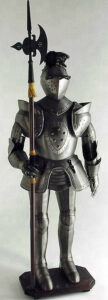 all was quiet – really quiet. I stood in the entrance hall, alone; facing a suit of knight’s armour holding an axe (not the one shown left, but similar). Every light was still on in the building… and I don’t mean just your normal business ceiling lights. Tiers of crystal chandeliers extended down cavernous hallways in both directions. It all felt a bit like the film, ‘The Shining’ with Jack Nicholson, and I began to feel like the little boy who rides his tricycle along endless deserted corridors of horror. I couldn’t believe that everyone had buggered off for the weekend and
all was quiet – really quiet. I stood in the entrance hall, alone; facing a suit of knight’s armour holding an axe (not the one shown left, but similar). Every light was still on in the building… and I don’t mean just your normal business ceiling lights. Tiers of crystal chandeliers extended down cavernous hallways in both directions. It all felt a bit like the film, ‘The Shining’ with Jack Nicholson, and I began to feel like the little boy who rides his tricycle along endless deserted corridors of horror. I couldn’t believe that everyone had buggered off for the weekend and 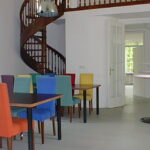 simply left all the lights on! I started to search for a bedroom. I headed off down the corridor to the left of reception. When I reached a room at the end, inside was a small kitchen area to the left and a spiralling staircase up to a sort of mezzanine balcony. At the top, there was a doorway to a bedroom. I decided to make camp there. (I’m quite sure it was the room shown on the right, before it got a new floor and the walls painted).
simply left all the lights on! I started to search for a bedroom. I headed off down the corridor to the left of reception. When I reached a room at the end, inside was a small kitchen area to the left and a spiralling staircase up to a sort of mezzanine balcony. At the top, there was a doorway to a bedroom. I decided to make camp there. (I’m quite sure it was the room shown on the right, before it got a new floor and the walls painted).
Once unpacked, I decided to explore the building. So I didn’t get lost, I took my notebook and started drawing a map as I progressed. As well as stairs, there were also a couple of 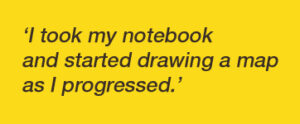 elevators – although I don’t remember trying them in case something happened and I got stuck with no one around. As I moved around the ground floor, I found myself locking one or two doors. Again, unbelievably, the mansion had been left unlocked with rooms full of equipment and computers waiting to be set up. The woman who had spoken with me earlier had mentioned that builders would be arriving in the morning and ‘could I let them in.’ Until I’d locked them out, there was previously no need for anyone to let them in!
elevators – although I don’t remember trying them in case something happened and I got stuck with no one around. As I moved around the ground floor, I found myself locking one or two doors. Again, unbelievably, the mansion had been left unlocked with rooms full of equipment and computers waiting to be set up. The woman who had spoken with me earlier had mentioned that builders would be arriving in the morning and ‘could I let them in.’ Until I’d locked them out, there was previously no need for anyone to let them in!
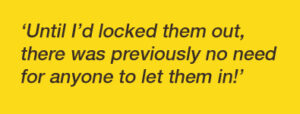 Upstairs, were various rooms – some with tables, chairs and computer equipment and, upstairs again, more empty rooms – some with metal floors. (I half expected to see Dr Who’s Daleks suddenly appear). I gradually ended up in a long, dark attic corridor with little doors to what I thought were probably bedrooms. The mansion was an absolute labyrinth and it wasn’t until the following morning that I realised I hadn’t even made it to the basement – and more unlocked doors I’d missed from the night before.
Upstairs, were various rooms – some with tables, chairs and computer equipment and, upstairs again, more empty rooms – some with metal floors. (I half expected to see Dr Who’s Daleks suddenly appear). I gradually ended up in a long, dark attic corridor with little doors to what I thought were probably bedrooms. The mansion was an absolute labyrinth and it wasn’t until the following morning that I realised I hadn’t even made it to the basement – and more unlocked doors I’d missed from the night before.
I awoke early and operated the electric gates to let in the builders and unlocked the mansion’s front door. Much of the rest of the weekend is a blur now, but on the Monday morning, it was decided I should be moved, temporarily, to an hotel at Zaventem – near both the airport and a Starlab building that Richard and his team were currently operating from. After about a week in the hotel, I was given a room in the mansion basement, where the only other person, Leo de Penning, also had a room. Leo and I quickly formed a good friendship, which remained for the whole time I was at Starlab.
Once back at the mansion, I asked if I could hire a car for the duration of my stay, as I’d still be working at Zaventem until the mansion lab was completed and everyone moved ![]() across. Starlab agreed and Richard took me to get a car from Zaventem – which he paid for on behalf of Starlab. Just before we left, he offered the comforting words of: “Whatever you do, don’t damage it! People drive like maniacs in Belgium and there are always accidents – you’ve probably noticed, lots of cars have dents…” I drove off in a red Mitsubishi hatchback. Fortunately, Belgium suited my assertive driving style and I loved every minute of my time driving between the mansion and Zaventem, via a rather pleasant woodland road – but there’s another story at the beginning of that adventure…
across. Starlab agreed and Richard took me to get a car from Zaventem – which he paid for on behalf of Starlab. Just before we left, he offered the comforting words of: “Whatever you do, don’t damage it! People drive like maniacs in Belgium and there are always accidents – you’ve probably noticed, lots of cars have dents…” I drove off in a red Mitsubishi hatchback. Fortunately, Belgium suited my assertive driving style and I loved every minute of my time driving between the mansion and Zaventem, via a rather pleasant woodland road – but there’s another story at the beginning of that adventure…
The mansion was roughly south of Brussels and Zaventem was roughly north east of Brussels. I had to find a way to get across Brussels via the big ring road motorway, locally referred to [what sounded like] ‘the O’ (short for RO). No one had SatNavs back then and mobile phones were still basic and definitely not ‘smart’. I managed to find a big map on the wall along a corridor and although it was somewhat historic, it showed the general route I needed to take.
After collecting the car with Richard, I followed him back to the mansion. He then departed and told me to meet him at the Zaventem lab in the morning. I said I’d set off and hopefully get to him by about 10 am. So the next morning, I set off with a rough idea of  where I had to go, written in my notebook. However, it wasn’t long before I became hopelessly lost in the centre of Brussels. All I could think of doing, was parking up and finding someone to ask directions. Firstly, I found a shop which sold mobile phones. I had a UK mobile with me, but it was expensive to use. It had already previously charged me to phone home, both at my end and the home end! Also bear in mind, at this time in history, you didn’t have cheap ‘roaming’ and couldn’t buy a SIM pack – the SIM came with the phone. I signed up for a cheap Nokia and asked if the shop could charge the battery and I’d return in an hour. Next, I bought a map of the area and proceeded to a café, where I ordered coffee and asked if the barista could
where I had to go, written in my notebook. However, it wasn’t long before I became hopelessly lost in the centre of Brussels. All I could think of doing, was parking up and finding someone to ask directions. Firstly, I found a shop which sold mobile phones. I had a UK mobile with me, but it was expensive to use. It had already previously charged me to phone home, both at my end and the home end! Also bear in mind, at this time in history, you didn’t have cheap ‘roaming’ and couldn’t buy a SIM pack – the SIM came with the phone. I signed up for a cheap Nokia and asked if the shop could charge the battery and I’d return in an hour. Next, I bought a map of the area and proceeded to a café, where I ordered coffee and asked if the barista could  show me where we were on the map. He had no idea! I collected my new phone and gave Richard a call to update him. The journey didn’t improve and I kept stopping to ask for directions. Belgium is both Dutch and French speaking, with signage that is sometimes in either language, but rarely both and it seemed to depend on whether the area you had entered was predominantly Dutch or French. I had to rely on using my basic French, when English didn’t work, regardless of where I was. I discovered quite quickly, that Belgians don’t direct like the English. “Go up there and turn left.” No additional instruction of ‘how far up there?’ or ‘which left?’, or what else to look out for. Somehow, I got onto what I thought was the ‘O’, but later discovered it was a smaller ring, running within the boundary of the ‘O’. The ‘O’ was much bigger with more lanes. It was now approaching 3 pm and I called Richard again. “I’ll come and find you.” he said. “You’re actually very near.” Ten minutes later, Richard appeared on his motorbike and I sheepishly followed him to the lab.
show me where we were on the map. He had no idea! I collected my new phone and gave Richard a call to update him. The journey didn’t improve and I kept stopping to ask for directions. Belgium is both Dutch and French speaking, with signage that is sometimes in either language, but rarely both and it seemed to depend on whether the area you had entered was predominantly Dutch or French. I had to rely on using my basic French, when English didn’t work, regardless of where I was. I discovered quite quickly, that Belgians don’t direct like the English. “Go up there and turn left.” No additional instruction of ‘how far up there?’ or ‘which left?’, or what else to look out for. Somehow, I got onto what I thought was the ‘O’, but later discovered it was a smaller ring, running within the boundary of the ‘O’. The ‘O’ was much bigger with more lanes. It was now approaching 3 pm and I called Richard again. “I’ll come and find you.” he said. “You’re actually very near.” Ten minutes later, Richard appeared on his motorbike and I sheepishly followed him to the lab.
My reputation for getting lost was starting to precede my introductions to people and on one occasion, I went up to the attic where Prof. Dr Dick Bierman was staying. He was sat  drinking a glass of red wine. “Ah, you’re the one who keeps getting lost.” he said, smiling. We had a bit of a chat and he had obviously taken pity on me: “Tomorrow I’ll take you for a drive in my car and show you around the local area.” I think the next day was Sunday. I followed Dick to his car and we set off. It was really helpful getting a bit of geographical relationship to where everything was and it boosted my confidence a bit to know a shorter way to Zaventem, the following morning. Gradually, I had the route sorted and enjoyed my daily driving for the rest of the week.
drinking a glass of red wine. “Ah, you’re the one who keeps getting lost.” he said, smiling. We had a bit of a chat and he had obviously taken pity on me: “Tomorrow I’ll take you for a drive in my car and show you around the local area.” I think the next day was Sunday. I followed Dick to his car and we set off. It was really helpful getting a bit of geographical relationship to where everything was and it boosted my confidence a bit to know a shorter way to Zaventem, the following morning. Gradually, I had the route sorted and enjoyed my daily driving for the rest of the week.
One thing I will mention; Richard was right about some of the questionable driving abilities. On one occasion, driving along the ‘O’, I spotted ahead of me a car laying across two central lanes of the motorway, on it’s roof. I couldn’t see anyone in it and everyone simply drove either side to pass it.
Starlab had offered me a return visit back home in the UK, midway through my time with them, so I could see my family. When I returned, everyone was now in the mansion and there was more of a feeling of togetherness and general camaraderie. Emails began showing up, such as: “If anyone needs a [this or that]” and then another email arrived. “If anyone needs business cards, please return the completed form with your details.” Well, I thought, “in for a penny, in for a pound.” I may as well have some while I’m here. They can always refuse if they realise I’m a bit temporary. One of the boxes was labelled ‘Title’. So being British, I put ‘Mr’. When my cards arrived a couple of days later, I realised they meant ‘position’. So I ended up with what they thought I was:
On another occasion, I once again came across what I started to call ‘the Belgian way’. I needed to order some electronic components for one of my projects. I went over to the electronics guy in charge of our lab. “Do you know where I might be able to get [x] from?” “No.” he replied. “Are there any local shops which might have [x}?” “No.” From his tone of voice, he wasn’t being deliberately unpleasant, but unlike myself, had the situation been reversed, I would have shown a bit more interest and at least tried to offer a couple of suggestions where I might try to find what I was looking for. So in the end, I had to return to my computer. I had an instant messenger program (you’d call it an App now) and in the evening, asked L if she could send out the part I needed from home and I would just order a replacement to be sent there for my return.
I’ve always considered myself to be a great improviser in any situation. I have a knack of seeing things as other things and I can usually adapt them for specific project purposes.  With this in mind, I needed to make some special bespoke, flat switches. I decided to explore the basement, as this seemed the most likely place for finding bits and pieces, possibly left by contractors when refurbishing the building. I can now report, that in the whole history of my ability to find things to improvise with, Starlab was a desert. There wasn’t so much as a drawing pin anywhere. In the end, I went with someone to a store which also sold various hardware items and decided I could improvise my switches using flat washers.
With this in mind, I needed to make some special bespoke, flat switches. I decided to explore the basement, as this seemed the most likely place for finding bits and pieces, possibly left by contractors when refurbishing the building. I can now report, that in the whole history of my ability to find things to improvise with, Starlab was a desert. There wasn’t so much as a drawing pin anywhere. In the end, I went with someone to a store which also sold various hardware items and decided I could improvise my switches using flat washers.
Most evenings, I met up with Leo and drove us to a little restaurant called the Moulin Rouge. I can’t now remember where it was, but I reckon it was only a 10 minute drive away. Leo was working with AI (Artificial Intelligence) with a leading proponent of the science, Prof. Dr Hugo de Garis. On one occasion, Leo managed to persuade Hugo to join us at the Rouge and I had the opportunity to discover more about AI. At one point, Leo asked Hugo why he had decided to join Starlab. Hugo said: “Because I believe in Walter. Everything he’s ever done has been successful.” I didn’t say anything. I remembered what Walter had said to me on our first meeting.
A meal with Champagne
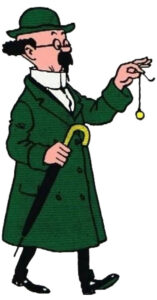 On one occasion, Walter de Brouwer invited several of us to join him for an evening meal. It may even have been a send-off for Andrey Zarur, who was about to go to Barcelona to help set up Starlab DF2. I don’t recall where we went, but I do remember quite a long walk to get there and also that it was drizzling with rain. Some people had gone ahead and others were making their own way there, but myself and a couple of others walked with Walter. At one point, I watched Walter, walking just ahead of me, and thought, not only was he my schema of a typical Belgian man, but his general gait, attire, and black umbrella suddenly reminded me of Belgian cartoonist, George Remi’s, ‘Professor Calculus’ from Hergé’s Adventures of Tintin. I don’t mean that with any disrespect to Walter – indeed, I rather liked him – but there was something quite quizzical and amusing about the whole situation of the CEO of Starlab walking, rather than being chauffeured by car.
On one occasion, Walter de Brouwer invited several of us to join him for an evening meal. It may even have been a send-off for Andrey Zarur, who was about to go to Barcelona to help set up Starlab DF2. I don’t recall where we went, but I do remember quite a long walk to get there and also that it was drizzling with rain. Some people had gone ahead and others were making their own way there, but myself and a couple of others walked with Walter. At one point, I watched Walter, walking just ahead of me, and thought, not only was he my schema of a typical Belgian man, but his general gait, attire, and black umbrella suddenly reminded me of Belgian cartoonist, George Remi’s, ‘Professor Calculus’ from Hergé’s Adventures of Tintin. I don’t mean that with any disrespect to Walter – indeed, I rather liked him – but there was something quite quizzical and amusing about the whole situation of the CEO of Starlab walking, rather than being chauffeured by car.
We entered the restaurant, which was quite small inside and we had a long table that seemed to take up most of the room. After a very enjoyable meal, with drinks of our choice – Walter and Andrey only ever seemed to drink Champagne – Walter suddenly requested several more bottles so that we could also have some. I personally love Champagne, but I remember, for some reason, being quite careful not to consume too much alcohol. I was most likely driving the next morning. As most of us gradually departed, I remember leaving Walter and Andrey still working their way through more Champagne.
An unexpected turn of events
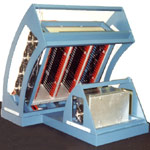
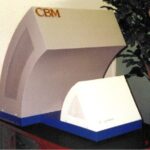 It was an important week. Leo said that he and Hugo were going to be able to link their computerised brain, aka the CAM-brain Machine (CBM), to the Internet for some tests. It was a strange looking computer, costing about one million pounds. Created by Russian born, Michael Korkin, and only 1 of 7 made. (Very oddly, another of the 7 was located directly across the road from Starlab with a telecom company). The CBM was, at the time, one of the most powerful computers available and well suited to creating artificial neural networks. As I understood it, Hugo and Leo were attempting to create an artificial intelligence (or brain) that could start ‘thinking’ for itself – and this CBM’s computing power was able to handle a whole bunch of algorithmic computations simultaneously. (I was also reminded of Alan Turing’s ‘Thinking Machines’ – although that was a term, according to Turing, “too meaningless” to deserve discussion.
It was an important week. Leo said that he and Hugo were going to be able to link their computerised brain, aka the CAM-brain Machine (CBM), to the Internet for some tests. It was a strange looking computer, costing about one million pounds. Created by Russian born, Michael Korkin, and only 1 of 7 made. (Very oddly, another of the 7 was located directly across the road from Starlab with a telecom company). The CBM was, at the time, one of the most powerful computers available and well suited to creating artificial neural networks. As I understood it, Hugo and Leo were attempting to create an artificial intelligence (or brain) that could start ‘thinking’ for itself – and this CBM’s computing power was able to handle a whole bunch of algorithmic computations simultaneously. (I was also reminded of Alan Turing’s ‘Thinking Machines’ – although that was a term, according to Turing, “too meaningless” to deserve discussion.
Leo and I returned from our evening meal quite late that night, and he immediately went off to check on the CBM which had been left running its tests. The next day, he confessed some rather shocking news. “The CBM’s been switched off! We can’t use it anymore!” Apparently, as Leo had walked into the special climate-controlled room, housing the CBM, its attached monitor screen was receiving the end of a message, along the lines of: “… and because I have not received payment, I am switching this machine off.” The inventor had tapped into it through the Internet, and simply disabled it.
PS: I don’t know if it was before, or after, a settlement was eventually reached, but the work they were doing gained a Guinness World Record in Science and Technology in 2001, for developing a ground breaking AI supercomputer for real-time simulation of large scale artificial neural networks.
It was around this time that I learnt something more of ‘the Belgian way’. It goes like this:
- You place an order
- Nothing happens for a couple of weeks and you ask what’s happening?
- You are told “the order is on its way”
- The order doesn’t arrive and requires further chasing up
- “We’ve sent it out today”
- Still no receipt – another call to the supplier
- “Yes, it’s here, we’ll send it out today”. “You said you’d sent it!”
- The order finally arrives
- The recipient doesn’t pay for the goods
- We are now being chased for payment
- After threats to go to Court, payment is made
Apparently, the payment for the CBM was held back, after Starlab discovered it could buy the one from across the road for half the price. I began to see ‘the writing on the wall’, as the expression goes.
 I was nearly at the end of my official time with Starlab. I had successfully completed the delivery of one main project and gave details of 3 more. The first was later patented by Starlab, and I had to sign some paperwork to release any claim on it. (I knew that anything I did was owned by Starlab, so it wasn’t an issue). There was a big open day at the weekend – just days after the CBM had been disabled and it sat in it’s room, now with a plastic window replacing the door and futuristically bathed in purple and blue light. All the teams were also working towards a Christmas open day to show off their projects to investors and possibly some of the public. Richard had asked if I’d be around, but I already had my tickets to return home.
I was nearly at the end of my official time with Starlab. I had successfully completed the delivery of one main project and gave details of 3 more. The first was later patented by Starlab, and I had to sign some paperwork to release any claim on it. (I knew that anything I did was owned by Starlab, so it wasn’t an issue). There was a big open day at the weekend – just days after the CBM had been disabled and it sat in it’s room, now with a plastic window replacing the door and futuristically bathed in purple and blue light. All the teams were also working towards a Christmas open day to show off their projects to investors and possibly some of the public. Richard had asked if I’d be around, but I already had my tickets to return home.
I liked Starlab and felt at home there. So much so, that I wanted them to offer me a permanent appointment – after which I would possibly move my family to Belgium. It was fantastic to have access, not only to resources, but all the people from different cultures  and disciplines – mathematicians, physicists, researchers, and even artists. A couple of days before my departure, I was invited to a review meeting with Starlab research manager, Prof. Walter Van de Velde. A pre-pep talk with Jack Klaff had proven helpful in pitching my reason for wanting permanent employment and because they liked the fact I built things they could try out physically, I was offered a permanent appointment.
and disciplines – mathematicians, physicists, researchers, and even artists. A couple of days before my departure, I was invited to a review meeting with Starlab research manager, Prof. Walter Van de Velde. A pre-pep talk with Jack Klaff had proven helpful in pitching my reason for wanting permanent employment and because they liked the fact I built things they could try out physically, I was offered a permanent appointment.
A couple of days before I left, I met the long-awaited time travel specialist, Dr Serguei Krasnikov. He was climbing the stairs from the ground floor as I was about to go down 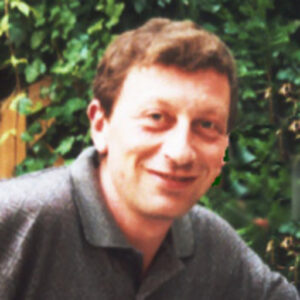 them. I waited at the top. He was a friendly man and we had a brief chat. I really wanted to ask him about some of his theories on time travel – an area which had interested me since childhood, but it was my last day and I was literally on my way home. He’d been expected to arrive before this time (no pun intended) but had been delayed. I was quite disappointed not to have a further opportunity to talk with him (although I did briefly manage to exchange messages with him a few years later). We said our goodbyes and he went into a room behind where I’d been standing. I think it was his newly allocated accommodation.
them. I waited at the top. He was a friendly man and we had a brief chat. I really wanted to ask him about some of his theories on time travel – an area which had interested me since childhood, but it was my last day and I was literally on my way home. He’d been expected to arrive before this time (no pun intended) but had been delayed. I was quite disappointed not to have a further opportunity to talk with him (although I did briefly manage to exchange messages with him a few years later). We said our goodbyes and he went into a room behind where I’d been standing. I think it was his newly allocated accommodation.
It was December and I was back home – concerned for both receiving written confirmation of my permanent appointment, and also with Starlab’s future. In fact, this combination of concerns afforded me some breathing space before I needed to reply to their offer and begin my move to Belgium. I didn’t want to go there while Starlab’s future hung in the balance. Apparently, unknown to me at the time, some key investors had pulled out and whether this was in part due to the failure of the CBM to produce results, I do not know. But from my own intuitive observations, after Andrey Zarur left to start up Starlab DF2 in Barcelona, no one was really left to watch over the ‘purse strings’ (cash-flow) – and I just felt that Starlab was expanding too quickly and now spending vast amounts of money. A few weeks after receiving written confirmation of my permanent appointment, Starlab DF1 went into liquidation and a few months later, closed down. I remember that Richard was among those particularly upset, as he had put his heart and soul into Starlab for a few years and become one of the more profitable departments – with many Patents and licenses. But anyway, whatever I say here, is somewhat irrelevant to what may have really occurred, or not.
Starlab Barcelona
I had once thought about applying to work in Barcelona, but on closer inspection, I really wasn’t qualified in any of their areas of research. Starlab DF2 started life in the old observatory at the top of a hill. It was certainly another impressive location. Then, after 9 years, Starlab moved down to the bottom of the hill, close to the Science Museum which had reopened in 2004 as CosmoCaixa.
Andrey left Starlab in 2002 and among other positions, founded GreenLight Biosciences in 2008. Suddenly, in 2011, the director of Starlab DF2, Giulio Ruffini sent out a notification to all past Starlabbers, inviting them to visit the new location and to have a bit of a reunion. I’d never managed to visit the observatory site, so I thought it would be good to try and see the new location.
However, once again, I had little money to travel, but deep inside, I felt quite excited by the prospect of going. A few days later, a request was sent: “Please let us know if you can attend.” I said I would like to, but asked to be put down as a ‘maybe’. A few more days passed, and another email. “If you would like to give a talk, please send us the title, so we can include you on the list.”
So here I was, in rational world, realising that I wanted to go; despite also feeling a bit nervous about going; and not being a seasoned traveller and also having to go alone… But I really liked the idea of giving a talk… even though I wasn’t likely to be going.
Anyway, I needed a title that would appeal to scientists and researchers. I’d been reading some articles on quantum physics and Italian experiments with the speed of light and it got me thinking. Suddenly, a title came to me and I emailed it off: “Quantum Mass Superstructures”.
Now a new worry… what on earth was I going to talk about based on that title? It was at this point that I consciously dipped into framework 2 (non-physical reality). I opened a blank PowerPoint presentation and started to let ideas come to me. Surprisingly, my talk title started to make sense and I completed what I felt to be an interesting talk, after only a few days work – and emailed it to Starlab.
I still had the worry of money; In fact, I still couldn’t go; and there were only a few weeks left. So here I was, having now completed and sent my talk… realising that I’d probably be cancelling going to Barcelona. In that instance, I kind of gave up, or as they say in spiritual/metaphysical circles, I surrendered – I let go.
Some months before the Barcelona opportunity, I’d put in a compensation claim after the UK admitted cases of pension mis-selling. It seemed I had a good case, but I knew, for other reasons I won’t bore you with, little of my reimbursement would be coming to me directly. However, one rebate was permitted to come to me and I suddenly received a cheque with enough money to cover my air fair and a hotel – Barcelona was suddenly a go!
Barcelona
I drove to Leeds/Bradford airport and left the car in my allocated parking. Everything went smoothly and my choice of the airport being smaller and easier to navigate for me, was vindicated by relatively few people and the start of the ease for which I had planned. My first really memorable and somewhat strange event happened when boarding the plane. I took my isle seat (did I mention that I used to do aircraft evacuation trials at Cranfield University… and also liked leg room?) with two empty seats next to me. As I sat there, watching more passengers entering and the plane rapidly filling up, expecting someone to ask if they could sit in the other seats next to me – no one did. I was actually starting to feel a little anxious that people would notice. By the time boarding finished, every seat on the plane was occupied – except for the two next to me. I actually felt rather self-conscious… and then I thought, ‘maybe people will think I booked all three seats’. Anyway, I was able to move to the window seat (which I actually always preferred for the view) but still had my ‘escape route’ clear.
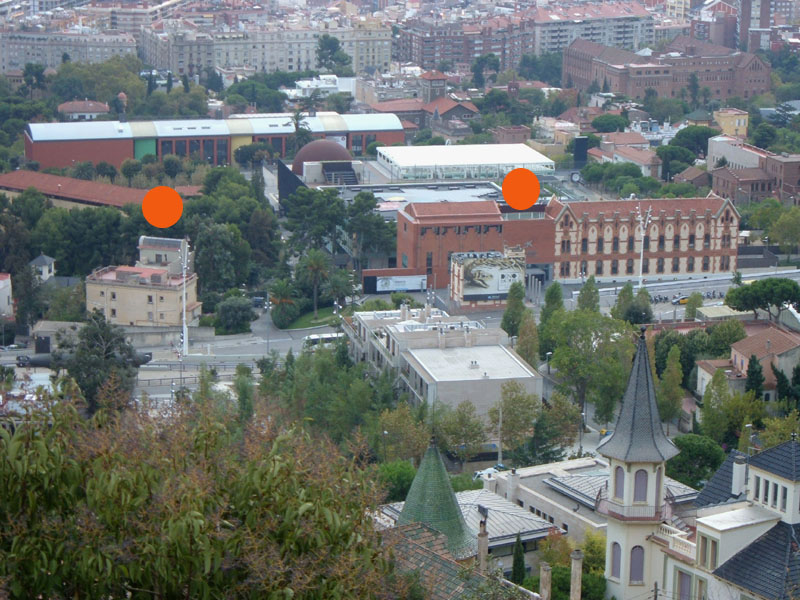 Starlab and the Science Museum, CosmoCaixa
Starlab and the Science Museum, CosmoCaixa
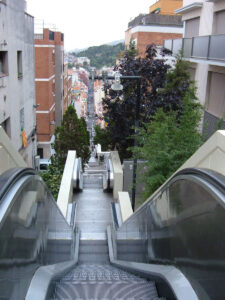 I arrived in Barcelona on the afternoon of Wednesday 19 October, 2011 and checked into my hotel. I then walked to Starlab, so that I knew the route and how long it would take me to get there on Friday. I had decided that the aim of my visit would be ‘ease’ and I’d managed to find a hotel only about 15 minutes walk away. Because I’d set off at around 4 pm, the light was fading fast, by the time I got back to the hotel.
I arrived in Barcelona on the afternoon of Wednesday 19 October, 2011 and checked into my hotel. I then walked to Starlab, so that I knew the route and how long it would take me to get there on Friday. I had decided that the aim of my visit would be ‘ease’ and I’d managed to find a hotel only about 15 minutes walk away. Because I’d set off at around 4 pm, the light was fading fast, by the time I got back to the hotel.
On Thursday, I had a walk to the amazing Park Güell. It was initially a steep hill down, followed by a steep hill up – but it was worth it and had some great views over the city.
Conversation, relaxation, food, walking, and a visit to CosmoCaixa
On Friday morning, we all met at the Starlab building to present our talks.
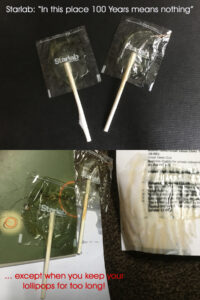 Everything went well and as it turned out, aspects of my talk had some crossover with the other talks given – in particularly with Dick Bierman’s, in an area I would call ‘the unknown reality’. Chris Duif, who had helped considerably with organising the event with Giulio Ruffini, had given us a time limit for our talks and because a couple of people didn’t turn up, I mistakenly thought I could speak for a bit longer… Anyway, to my slight embarrassment, Chris had to give me a small prompt, but fortunately, I only had a couple of things left to mention. At the end of all the talks, we had a group photograph.
Everything went well and as it turned out, aspects of my talk had some crossover with the other talks given – in particularly with Dick Bierman’s, in an area I would call ‘the unknown reality’. Chris Duif, who had helped considerably with organising the event with Giulio Ruffini, had given us a time limit for our talks and because a couple of people didn’t turn up, I mistakenly thought I could speak for a bit longer… Anyway, to my slight embarrassment, Chris had to give me a small prompt, but fortunately, I only had a couple of things left to mention. At the end of all the talks, we had a group photograph.
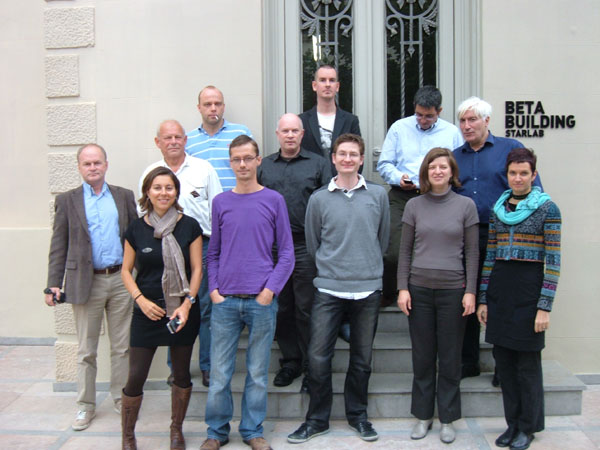 (Click on image to see names) – Visit the Starlab website
(Click on image to see names) – Visit the Starlab website
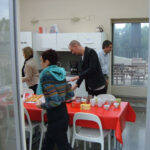
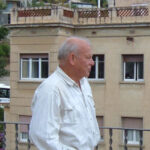 During a break from proceedings, we had refreshments on the roof area of Starlab, followed by a tour of the labs, with demonstrations of some of the current research.
During a break from proceedings, we had refreshments on the roof area of Starlab, followed by a tour of the labs, with demonstrations of some of the current research.
A little later, our host treated us to lunch at the Science Museum, CosmoCaixa, where we also enjoyed a look around – it was a fabulous place.
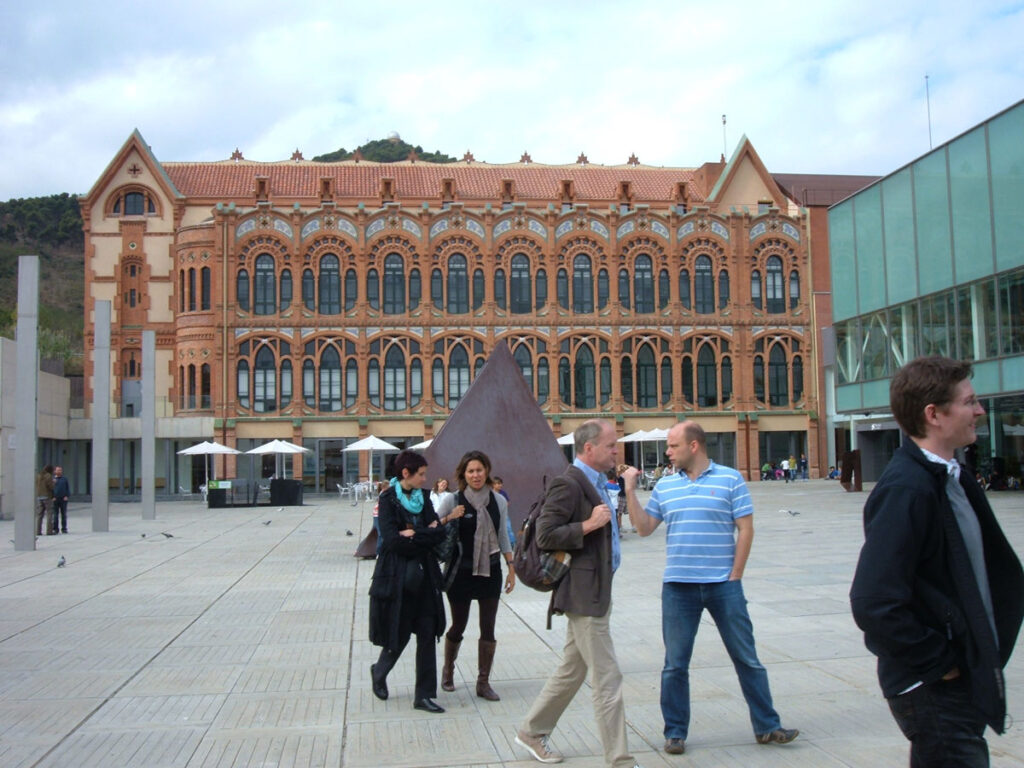 Maja Kuzmanovic, Ana Maiques, Chris Duif, Leo de Penning, Christian Decker
Maja Kuzmanovic, Ana Maiques, Chris Duif, Leo de Penning, Christian Decker
On Saturday morning, we met up to go for a walk along the mountainside, behind Starlab. Some of the team’s family members also joined us. The weather was warm and sunny and we were heading for a remote, partially covered, open air, hill top restaurant. I had no idea where the restaurant was, or even how far away – sometimes expecting it might be around the next corner. Although some interesting conversations kept time at bay, I started to wonder if we’d ever get there! But eventually, we arrived and the food was excellent.
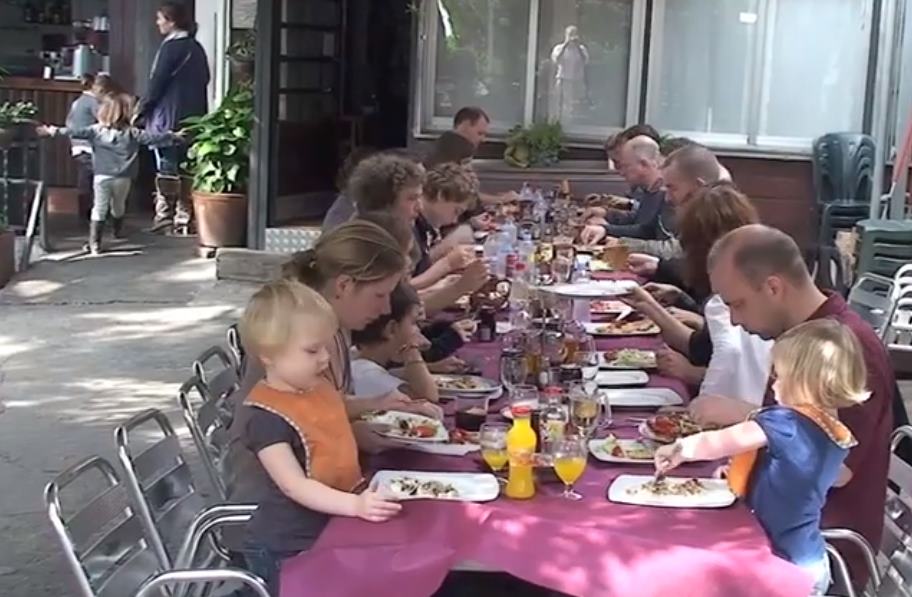 (You can see Chris Duif, reflected in the window, taking this photo)
(You can see Chris Duif, reflected in the window, taking this photo)
Given the time it had taken us to walk there, a few of us considered taking a bus back to Starlab. However, after waiting for a while with no buses forthcoming, we eventually all just walked back together. I seem to remember the light beginning to fade as we arrived back at CosmoCaixa.
In the evening, we went into Barcelona for a meal at the Biblioteca restaurant. I was initially a bit apprehensive as to what it would cost and hoped I had enough Euros on me… Fortunately, I did have enough to comfortably pay my contribution and also join in with a group donation for a ‘thank you’ present for Giulio.
On Sunday morning, I packed and got ready to leave. Els and her partner, who I discovered were staying in the same hotel as me, had kindly agreed to share their taxi to the airport. A few of us were leaving that day, but the remainers were going to visit the old observatory.
I really enjoyed the trip and was grateful that things worked out for me and I had the opportunity to catch up with the other Starlabbers.
I boarded my plane and took my seat. This time, someone else was next to me. Suddenly, a woman appeared and asked if I might consider swapping seats with her, as her partner was the person next to me and they’d only managed to purchase separate locations. I was quite happy to oblige and went to the seat the woman had come from. I ended up with another window seat and a spare seat next to me – so once again, I had the perfect accommodation.
After arriving home, I realised that I was £176 into my bank overdraft, but as I went through my mail, I discovered a letter from the company who had given me the original refund: “We are sorry to inform you that we made a miscalculation on the interest we owed. Please find the enclosed cheque for £176.” I do love it when the universe gets behind me and a plan comes together!
A few days later, Chris Duif compiled a short film of the occasion.
Afterthoughts
During the process of writing about my Starlab experience, I have to admit that I was only ever a ‘bit player’ in the company’s story. I like to think I possibly made one or two helpful contributions to some sections’ research through discussions, and I may have been one of the few there who spotted the connections between the work of different areas and individuals – beyond the confines of my own department. One of the projects I started to develop for Starlab (and showed details of before I left) was something that we now call ‘RF Tagging’. But there’s no way now, that I would be able to prove that. All I can tell you is the name I gave my version of it: ‘Objects that know they’re not there’.
Even before I went to Starlab, I’d always been interested in inventing things – and I think you can see that from this ‘Land of Gobeyond’ website. On one occasion, back in the late 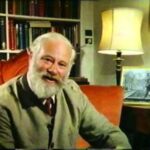 1980’s, I returned to my house, just as the phone started to ring. It was Bob Symes – the then resident inventor on UK television’s ‘Tomorrow’s World’ science programme. I’d written to him about a vehicle ‘Fuel Sticker’ I’d invented, after working for a time as a fuel forecourt attendant. Being aware of his time, I remember trying to release him from our conversation a few times, but he was so kind and enthusiastic, that he talked with me for well over half an hour. He said he liked my idea very much, but that it was too easy to replicate and would be almost impossible to Patent. I had to admit, I agreed.
1980’s, I returned to my house, just as the phone started to ring. It was Bob Symes – the then resident inventor on UK television’s ‘Tomorrow’s World’ science programme. I’d written to him about a vehicle ‘Fuel Sticker’ I’d invented, after working for a time as a fuel forecourt attendant. Being aware of his time, I remember trying to release him from our conversation a few times, but he was so kind and enthusiastic, that he talked with me for well over half an hour. He said he liked my idea very much, but that it was too easy to replicate and would be almost impossible to Patent. I had to admit, I agreed.
These days, I focus my own research on the field of Metaphysics – exploring what is ‘behind’ our physical world/universe experience. In fact, I’ve studied this for over 40 years and employ many of my discoveries in my daily life. After writing a few books on the subject, I became particularly interested in channelled information and have twice spoken at the California Seth Conference. You can discover more on my site: Keekoo.co.uk
Additional Information
Starlab: the ‘Noah’s Ark’ of scientific research that launched 1,000 startup ideas
Here’s a sample of Dick Bierman’s project interests:
Dick Bierman – Open Sciences | PSI Encyclopedia
Chris Duif – LinkedIn | Academia | Website
Walter De Brouwer – Wikipedia | LinkedIn | sharecare |sharecare team
Serguei Krasnikov – Pulkovo Observatory | CV | Wikipedia
Michael Korkin – LinkedIn | facebook
*I was married to L at the time I went to Starlab and we’d only had our daughter a year before.
Views: 216

